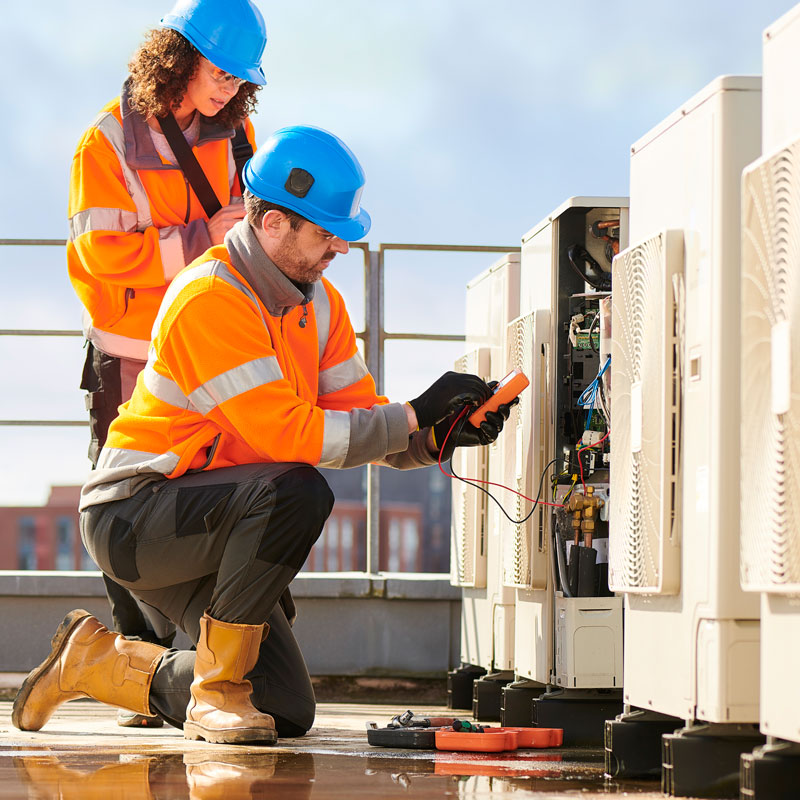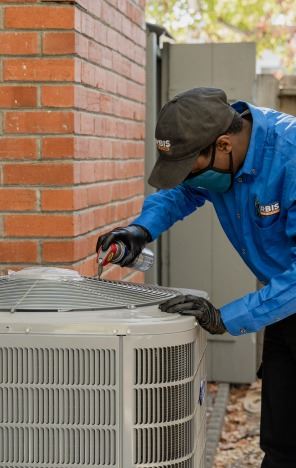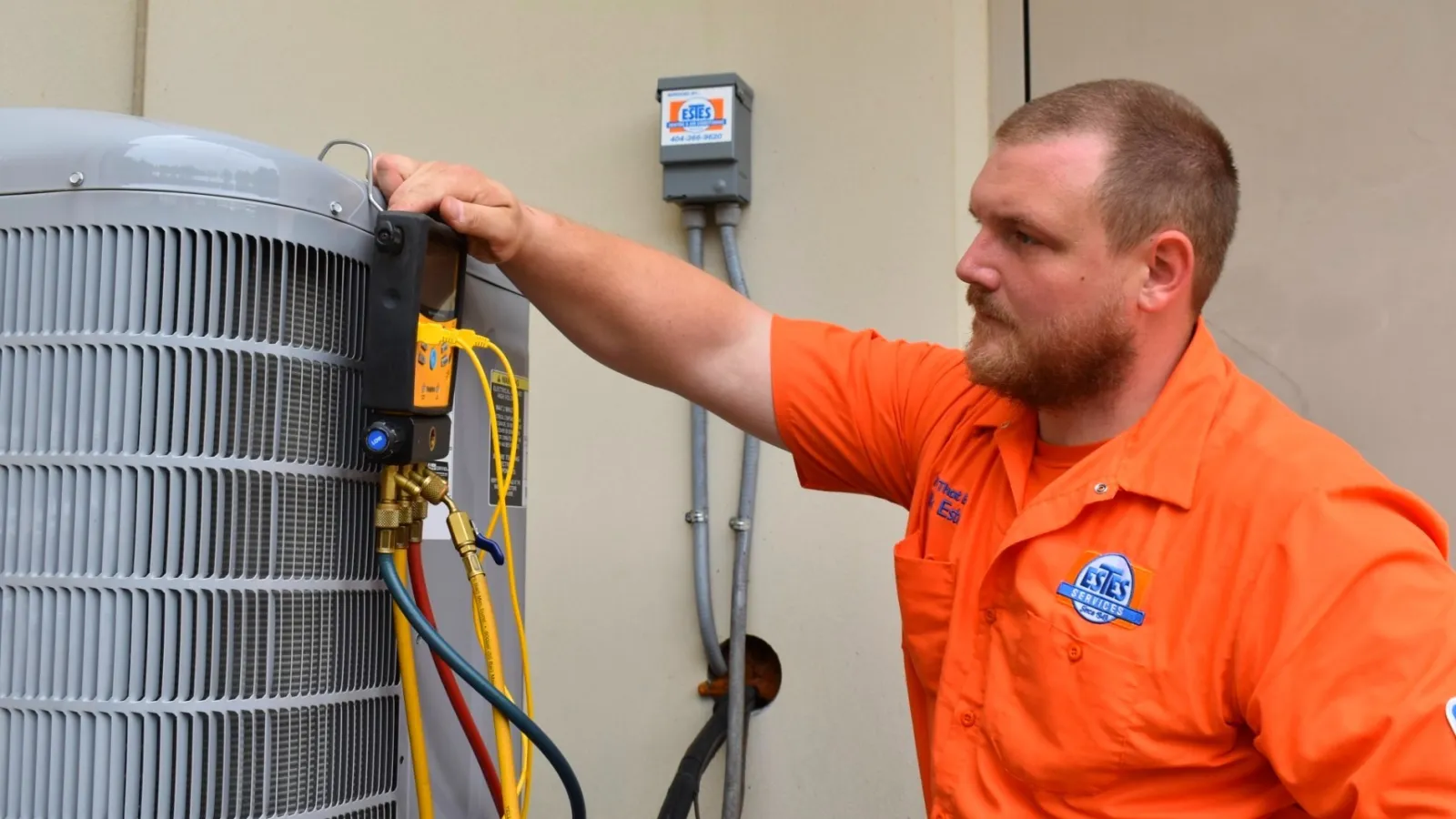Just How a Heat Pump and Heating System Job With Each Other to Maximize Your Home's Heating Performance
Recognizing just how a warm pump and heater work together is vital for home owners seeking effective heating solutions. Each system has its staminas, providing a balanced method to home convenience. The heatpump excels in modest temperatures, while the heating system supplies fast warmth during severe cold. This synergy not only minimizes power costs however likewise enhances the life expectancy of both home appliances. What elements influence this cooperation, and just how can home owners optimize their advantages?
Understanding Warm Pumps: How They Work
Although lots of people may be unknown with their inner workings, warm pumps play a vital duty in contemporary heater. These gadgets operate by moving heat from one place to one more, using the principles of thermodynamics. In cooler months, a heatpump essences heat from the outdoors air, ground, or water, and transfers it inside your home to warm up the home. Conversely, during warmer months, it can turn around the procedure, serving as an ac system by expelling warmth from inside to the outside.Heat pumps include an evaporator, growth, condenser, and compressor shutoff. The refrigerant within the system absorbs heat as it vaporizes at reduced temperatures and pressures. The compressor then raises the stress and temperature of the refrigerant, enabling it to release warm as it condenses. This effective procedure can greatly reduce power intake contrasted to standard home heating methods, making heatpump a lasting choice for environment control in homes.
The Duty of Heating Systems in Home Home Heating
Heating systems play an important role in home heating by supplying a dependable source of warmth during the colder months. They operate by generating heat with burning or electric resistance, dispersing it throughout the home by means of ducts or radiant systems. The effectiveness of a furnace is often measured by its Annual Gas Use Efficiency (AFUE) ranking, which shows how successfully the system transforms gas right into heat.Furnaces can utilize different power resources, including natural gas, power, lp, or oil, enabling homeowners to select the most suitable alternative for their demands. Unlike heatpump, which might have a hard time in severe cold, heating systems keep constant efficiency, ensuring that interior temperature levels remain comfy no matter of outside conditions. Furthermore, modern heating systems frequently come furnished with innovative technology, such as wise thermostats and variable-speed blowers, improving their effectiveness and responsiveness. This versatility makes heating systems a vital part in all-inclusive home heating methods.

Advantages of Using Both Systems With Each Other
Integrating the staminas of both heating systems and heatpump can cause a much more effective and effective home heating remedy. Utilizing both systems enables homeowners to make use of the warm pump's power performance during milder temperatures while depending on the furnace for more extreme cold problems. This twin approach can substantially minimize energy costs, as heatpump take in less power than conventional heating approaches when temperature levels are moderate.Additionally, using both systems together can improve convenience degrees in the home. Warm pumps can supply constant, even home heating, while heating systems can rapidly elevate ambient temperature levels when required. Additionally, the combination of both systems can extend the lifespan of devices by lowering wear and tear on each device, as they share the workload. Inevitably, homeowners can delight in a balanced, affordable home heating remedy that readjusts perfectly to differing climate condition, making sure a cozy and inviting home throughout the cold weather.
Exactly How Warmth Pumps and Furnaces Enhance Each Other
When property owners integrate warm pumps and heaters, they produce a complementary heater that maximizes performance and convenience. Warm pumps operate by transferring warmth from the outside air or ground, making them very reliable in modest environments. They succeed throughout milder temperatures, giving affordable home heating. On the other hand, heaters create warmth with combustion or electrical resistance, delivering strong, immediate heat throughout extreme cool conditions.The combination of these 2 systems permits vibrant modifications based on temperature changes. During warmer months or milder winter months days, the heatpump can take the lead, preserving power and decreasing costs. As temperature levels drop, the furnace can seamlessly engage, ensuring constant heat throughout the home. This harmony not just enhances power use but also improves the lifespan of both systems, as each system runs within its excellent performance array. With each other, they develop a well balanced setting that adapts to differing environment needs.
Enhancing Efficiency: Tips for Homeowners
House owners can improve their home heating efficiency via a number of useful approaches. Establishing a normal maintenance timetable, integrating clever thermostat technology, and carrying out effective insulation and sealing options from this source are essential steps. These measures not only enhance convenience yet likewise reduce energy costs.
Normal Upkeep Arrange
To ensure optimal home heating effectiveness, establishing a routine maintenance schedule is crucial for any kind of home. Homeowners must prioritize regular assessments of both heat pumps and furnaces to establish peak efficiency. This includes altering air filters each to 3 months, as clogged filters can considerably lower effectiveness. Furthermore, scheduling specialist upkeep at the very least yearly permits technicians to recognize and address potential concerns prior to they intensify. House owners need to additionally clean up the heatpump's outside system to stop debris buildup that can hinder airflow. By sticking to a normal upkeep timetable, homeowners not just enhance their furnace' performance yet likewise prolong their lifespan, causing better comfort and reduced power expenses throughout the chillier months.
Smart Thermostat Combination
Incorporating a wise thermostat right into a home heater can greatly improve energy effectiveness, specifically as it allows for exact control over temperature setups. These devices can find out the property owner's timetable and choices, automatically adjusting the temperature level to enhance convenience while lessening energy use. As an example, they can reduce home heating throughout times when the home is empty, minimizing unnecessary usage. Many wise thermostats additionally provide real-time energy usage data, making it possible for property owners to make enlightened choices concerning their heating practices. In addition, remote gain access to using smart device applications permits customers to readjust settings from anywhere, making certain the home is warm upon return. In general, wise thermostat integration not only boosts comfort but substantially adds to power cost savings and effectiveness.
Insulation and Sealing Solutions
Smart thermostats play an essential duty in power performance, however their efficiency can be greatly improved by correct insulation Go Here and securing options. Property owners need to focus on protecting attic rooms, wall surfaces, and floors to minimize heat loss. Top quality insulation products, such as spray foam or fiberglass, can significantly improve thermal resistance. Additionally, sealing spaces around windows, ducts, and doors prevents cool air seepage and warm escape. Weatherstripping and caulking are efficient methods for addressing these leaks - heat pump service. Normal evaluations for air leakages, along with using blower door examinations, can help recognize trouble locations. By purchasing insulation and sealing, homeowners can maximize the efficiency of their home heating systems, ultimately bring about reduced energy intake and reduced energy expenses
Usual Myths About Warm Pumps and Furnaces
What mistaken beliefs surround warmth pumps and heaters? Lots of people incorrectly believe that warmth pumps are ineffective in colder climates. In reality, contemporary heat pumps are developed to operate efficiently even in low temperatures, offering trustworthy home heating throughout winter months. One more typical misconception is that furnaces are always extra effective than warm pumps. However, this depends upon the particular power resources and effectiveness rankings of the units in concern. Some may likewise think that using both systems simultaneously is unnecessary, but as a matter of fact, this combination can enhance heating performance, particularly throughout extreme weather condition conditions. Additionally, individuals often presume that warm pumps require constant upkeep, when actually, they have comparable upkeep needs to traditional heating unit. By exposing these myths, property owners can make even more educated choices concerning their home heating choices, inevitably bring about enhanced convenience and energy efficiency in their homes.
Upkeep Considerations for Combined Equipments

Often Asked Concerns
Can Warmth Pumps Work Properly in Exceptionally Cold Climates?
Warm pumps can struggle in exceptionally cool environments as a result of minimized effectiveness and heat extraction restrictions. Improvements in technology have led to designs made for far better efficiency in such problems, boosting their feasibility in extreme atmospheres.
How Much Time Do Warm Pumps and Furnaces Commonly Last?
Heatpump normally last 15 to 20 years, while heating systems have a life expectancy of 15 to three decades. Routine upkeep can extend their long life, guaranteeing efficient operation and minimizing the requirement for early replacements.

What Is the Typical Price of Setting Up Both Solutions?
The typical cost of mounting both a heatpump and a heater commonly varies between $5,000 to $10,000 - heat pump service. Elements affecting this cost consist of system dimension, setup complexity, and local labor prices
Exist Tax Obligation Rewards for Making Use Of Energy-Efficient Heating Solutions?
Lots of home owners ask about tax incentives for energy-efficient heating unit. Various government and state programs typically supply Recommended Site credit scores or refunds, motivating the adoption of sustainable technologies to lower energy consumption and promote ecological responsibility.
Exactly how Do I Pick the Right Size Warm Pump and Furnace?
Picking the best size heatpump and heating system includes calculating the home's square video footage, thinking about insulation high quality, and examining regional climate. Consulting a specialist can assure excellent system efficiency and energy efficiency based upon details demands. heat pump installation ooltewah tn. Understanding exactly how a warm pump and heater work together is important for home owners seeking effective heating solutions. In chillier months, a warm pump removes warm from the outdoors air, ground, or water, and transfers it inside your home to warm the living space. When property owners integrate heat pumps and heating systems, they create a corresponding home heating system that takes full advantage of effectiveness and comfort. Warmth pumps run by moving warm from the outside air or ground, making them very effective in moderate environments. Warm pumps can struggle in exceptionally chilly climates due to lowered effectiveness and heat removal restrictions